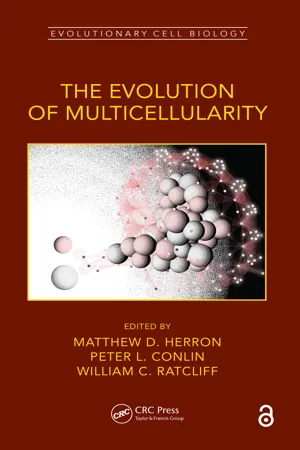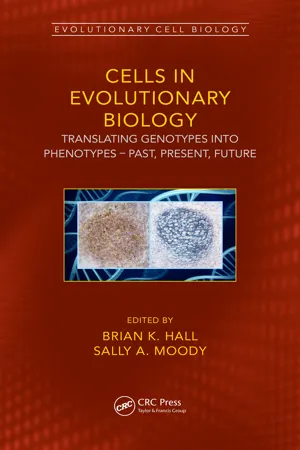Biological Sciences
Slime Mold
Slime molds are a group of organisms that display characteristics of both fungi and protozoa. They are single-celled organisms that can aggregate to form multicellular structures. Slime molds are known for their unique life cycle, which includes a mobile feeding stage and a stationary reproductive stage. They play important roles in decomposition and nutrient cycling in ecosystems.
Written by Perlego with AI-assistance
5 Key excerpts on "Slime Mold"
- Gabrielle I. Edwards, Cynthia Pfirrmann(Authors)
- 2021(Publication Date)
- Barrons Educational Services(Publisher)
Many other protist species are helpful to humans. Slime Molds help to keep an ecological balance by feeding on decayed plant and animal matter. These organisms also have a great deal of value as research specimens for investigators who are trying to ferret out the secrets of cell specialization and differentiation.Plankton is the mass of green that floats on rivers, lakes, and oceans. In reality, protists—microscopic “plant” life (phytoplankton) and microscopic “animal” life (zooplankton)—intermingle with mutual benefit in this floating mass, which serves as vital roles in the food chains of aquatic species.Review Exercises
WORD-STUDY CONNECTION
chytrid cilia colony conjugation contractile vacuole cyst diatom diatomaceous earth dinoflagellate fungus hypochytrid macronucleus micronucleus nematocyst oral groove paramylum pellicle plankton plasmodium protest protozoa pseudoplasmodium pseudopod pyrenoid body rhizoid Slime Mold social amoeba sorocarp sporangium stigma symbiosis trichocysts tsetse zooflagellate zooplankton zoospore zygoteSELF-TEST CONNECTIONPART A. Completion. Write in the word that correctly completes the statement.1 .One-celled protists that resemble animal cells are the _____.2 .Another name for a “self-feeder” is a (an) _____.3 .Amoebae move by means of false feet known as _____.4 .The usual mode of reproduction in protozoa is _____.5 .The relationship in which two organisms of different species live together and neither is harmed by the association is known as _____.6 .Digestion in Amoeba proteus takes place in the _____.7 .The Sporozoa are harmful to organisms of other species and are therefore classified as _____.8 .Anopheles is the genus name of a _____.9 .The organelle that expels excess water from the protist is the _____.10 .In Paramecium, the nucleus that controls metabolic activity is the _____.11 .The body of the paramecium is prevented from being totally flexible by the _____.12- eBook - ePub
Thorp and Covich's Freshwater Invertebrates
Ecology and General Biology
- James H. Thorp, D. Christopher Rogers(Authors)
- 2014(Publication Date)
- Academic Press(Publisher)
Cavostelium ). The dictyostelids are typically phagotrophic amebae; but when starved, they aggregate, form a migrating slug, and then produce a fruiting body from which spores are released. These later germinate to produce amebae. In the myxomycetes, individual amebae (sometimes thousands of them) with or without flagella coalesce to form a distinctive (often brightly colored) multinucleate plasmodium that gives rise to fruiting bodies. Slime Molds are common in damp forest soils, tree bark, and dead or dying wood, and abundance and local species richness are greater in deciduous than in coniferous forests. There is extreme patchiness in the distribution of dictyostelid species in forest soils, and coexistence of multiple species in the same small soil samples is rare. Most myxomycete species are believed to be cosmopolitan. The phagotrophic ameboid stages of Slime Molds may be quantitatively important grazers of bacteria, fungi, and the other primary decomposers of organic matter in soil. Other ecological interactions of Slime Molds may be at least as complex as their life cycles (e.g., the migrating slugs of dictyostelids appear capable of repelling grazing nematodes).Flagellated Protozoa
There is little consensus on how to classify the flagellates, and they are here divided into broad functional groups (Figures 7.1 and 7.3 ). Heterotrophic, nonphotosynthetic flagellates are fundamentally important because they are abundant (there are seldom fewer than 100/ml, sometimes 1000/ml, even in the plankton) and because their grazing activities are largely responsible for controlling the abundance of bacteria in aquatic environments. In some taxonomic groups, all species are exclusively heterotrophic (e.g., choanoflagellates and bodonids); others contain many mixotrophs (e.g., the euglenids and chrysomonads), whereas the haptomonads and cryptomonads are dominated by phototrophs and only a minority are capable of phagotrophy. In the past 25 years, a large diversity of heterotrophic flagellates has been discovered. Most of these are choanoflagellates, chrysomonads, euglenids, or bodonids. Some of the more easily recognized species (e.g., Rhynchomonas nasuta ) have been recorded from a wide range of habitat types in freshwater, marine, and terrestrial environments (Patterson and Larsen, 1991 ; Lee and Patterson, 1998 - eBook - ePub
- Lorentz C. Pearson(Author)
- 2023(Publication Date)
- CRC Press(Publisher)
Martin et at. 1983 ).Figure 8-4 (A) Slime Mold, tentatively identified as Fuligo septica, observed in grassy area partially shaded by Betula verrucosa, Sigtuna, Sweden, July 1993; (B) Physarum sp. on agar plate with oatmeal flakes.General Morphological and Physiological Characteristics
The assimilative structure of the true Slime Molds is a plasmodium, which may be white or brightly colored: yellow, red, brown, or violet. It is usually rather small and inconspicuous on the forest floor, but occasionally attains considerable size, rarely as large as a meter in diameter (Figure 8-4A ). The plasmodium is typically fan-shaped, formed by usually synchronous divisions of the nuclei but without divisions of the cytoplasm. Naked, filament-like coenocytes anastomose to produce a slowly migrating, slimy amoeboid mass with interconnecting veins. The veins are large and coarse at the trailing edge, but very fine at the moving edge. In many species, the advancing edge, instead of being vein-like, consists of a jelly-like ectoplasm with many nuclei in it moving ahead of an endoplasm made up of small veins. In other species, there is no differentiation of ectoplasm and endoplasm.As the plasmodium creeps over the decaying litter, it engulfs solid particles of food by means of pseudopodia ("false feet": protuberances extending from the body which later anastomose) and digests these internally. The creeping of the plasmodium is most rapid when abundant moisture is present; during dry periods or periods of prolonged high temperatures or other adverse conditions, it becomes a hard, waxy structure called a sclerotlum, which may also be brightly colored. When adequate moisture is available, the sclerotia give rise to plasmodia again. In some species, sclerotia have been known to remain viable for at least 2 years; sclerotia purchased from biological supply houses for classroom or teaching lab purposes, however, usually should be germinated within a few months to ensure success in obtaining good plasmodial development. - eBook - ePub
- Matthew D. Herron, Peter L. Conlin, William C. Ratcliff, Matthew D. Herron, Peter L. Conlin, William C. Ratcliff, Matthew D. Herron, Peter L. Conlin, William C. Ratcliff(Authors)
- 2022(Publication Date)
- CRC Press(Publisher)
S. rosetta propagate through fission, whereby the group splits in two (Dayel et al. 2011). Group propagation modes in which a group splits into two groups allow a life cycle to proceed without a single-cell intermediate.Not only do life cycles differ in the mechanisms used to achieve group formation and group propagation, but they also differ in the regulation of these processes. For example, while mammals are obligately multicellular organisms with a life cycle that is under tight developmental control, the facultative multicellularity of choanoflagellates and cellular Slime Molds is more flexible. In these organisms, the multicellular stage is expressed conditionally on the presence of a specific environmental trigger, highlighting an important role for the environment in the regulation of the life cycle. Environmental triggers involved in life cycle regulation can be both abiotic (e.g., nutrient or drought stress [King 2004 ; Ritchie et al. 2008 ]), as in the case of cellular Slime Molds, or biotic (e.g., quorum-sensing, predator-prey interactions [Alegado and King 2014 ; Waters and Bassler 2005 ; Woznica et al. 2017 ]), as in the case of choanoflagellates, and they ensure that life stages (in particular, the multicellular stage) are only expressed under the appropriate environmental conditions (Woznica and King 2018 ). Sensitivity to environmental conditions is not unique to facultatively multicellular organisms; the life cycles of many obligate multicellular organisms also depend strongly on environmental conditions (Nagy et al. 2018 ; Schlichting 1986 ; Walbot 1996 ).Two general points emerge from a broad outlook on multicellular life cycles (Figure 4.1). First, evolution has been extraordinarily creative in inventing different ways for multicellular organisms to develop and reproduce, leading to a plethora of multicellular life cycles. Second, a life cycle can only be properly understood in its ecological context, as the environment may provide crucial signals that govern life stage transitions. The extent to which the life cycle depends on the environment varies widely across life cycles: at one extreme are facultatively multicellular organisms, for which specific environmental conditions are required to trigger the multicellular stage; at the other extreme are life cycles that require limited environmental input, in which different life stages occur in a predictable succession (e.g., zygote → embryo → adult, for mammals). - eBook - ePub
Cells in Evolutionary Biology
Translating Genotypes into Phenotypes - Past, Present, Future
- Brian K. Hall, Sally A. Moody, Brian K. Hall, Sally A. Moody(Authors)
- 2018(Publication Date)
- CRC Press(Publisher)
Complex multicellular eukaryotic forms independently evolved at different moments in life’s history, most of them around approximately 800 Myr ago (Sebé-Pedrós et al. 2017). 4.1 INTRODUCTIONThe aim of this chapter is to ask what aspects pertaining to the evolutionary origin of multicellular life might be inferred from a survey of otherwise dissimilar protists that display one or both of two features: a unicellular-to-multicellular transition as part of their normal life cycle, or membership of a closely related group that contains both unicellular and multicellular members. Accordingly, we highlight aspects of multicellular development in three different “supergroups” of eukaryote protists: Dictyostelid or cellular Slime Molds (CSMs) (supergroup Amoebozoa, Mycetozoa; Section 4.2 ); Choanoflagellates, Filastareans, and Icthyosporeans (Opisthokonta, unicellular Holozoa; Section 4.3 ); and Volvocine green algae (Archaeplastida, Chlorophyceae; Section 4.4 ); their last common ancestor is believed to lie at the very root of the evolutionary tree of eukaryotes (Burki 2014). In the first two, multicellularity is achieved by the aggregation of single cells, in the third, by the products of cell division staying together. A striking difference from metazoan multicellularity is that none of the life cycles contain an obligatory sexual phase. Because not many species have been studied in detail, the information to be presented comes from a very small number of (what one hopes are) representative cases. As it happens, the most interesting evolutionary implications pertain to discordances between studied features, which means that they are likely to be robust. A brief summary concludes each of the three sections that follow. A general discussion comes at the end of this chapter.4.2 EVOLUTION OF MULTICELLULARITY VIA AGGREGATION: THE CELLULAR Slime MoldS This section is restricted to the CSMs and some other amoeboid organisms that display facultative multicellularity with similar life cycles. It is organized around four themes:
Index pages curate the most relevant extracts from our library of academic textbooks. They’ve been created using an in-house natural language model (NLM), each adding context and meaning to key research topics.
Explore more topic indexes
Explore more topic indexes
1 of 6
Explore more topic indexes
1 of 4




